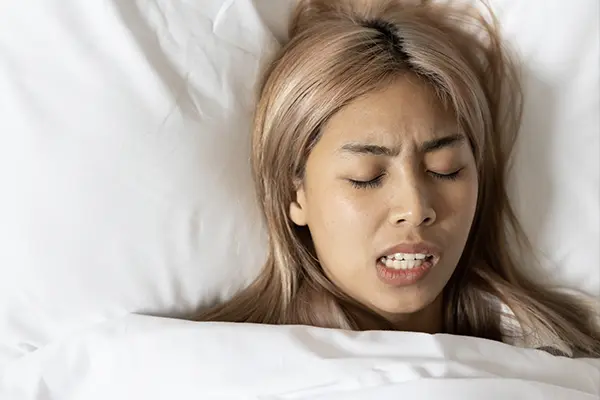The Silent Strain – 10 signs your dentist can tell you grind just by looking at your teeth and mouth
Have you ever wondered how a dentist can tell if you grind or clench your teeth? Some patients come to me and tell me,
“I went for a routine cleaning and my dentist tells me that I grind my teeth. I don’t think so. Nobody has said anything about me grinding my teeth. How is it possible that my dentist knows?”
Teeth grinding, also known as Bruxism, is a condition in which you grind, gnash or clench your teeth unconsciously when you’re awake or while you’re sleeping.
These are some tell-tale signs that you ain’t completely relaxed even when you’re asleep:
1. Wear Facets
When you grind your teeth, the top surface or sharp points of your teeth, known as cusps, appear flat. These flattened edges between the top and bottom teeth will match each other and will give us a clue of your grinding movements.
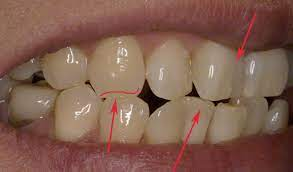
2. Exposed Dentine
When two surfaces grind together, they can wear down – this is known as attrition. When you grind your teeth at night, you gradually wear away the enamel of your teeth, exposing dentine which is the inner layer. Dentine is full of tubules that connect directly to the nerve (pulp) of your tooth. Symptoms would include increased sensitivity to cold drinks or ice cream and to acidic food such as lemon and other citrus fruits. Dentine is also more susceptible to acid attack. These acid erosions can create cup-like craters on the occlusal surface of your teeth.
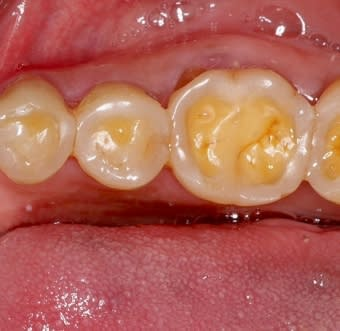
Source: Lorne Park Dental
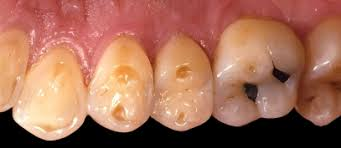
3. Craze Lines
These are minor surface crack lines on the enamel / initial layer of the tooth surface. They are asymptomatic and do not require treatment but they do signify that you are stressing your teeth with occlusal forces that may be abnormal. These forces can come from grinding, clenching or parafunctional habits like biting ice chips, bones or even a pen cap. They can sometimes discolour and cause aesthetic problems.

4. Front teeth that appear more shorter and flatter
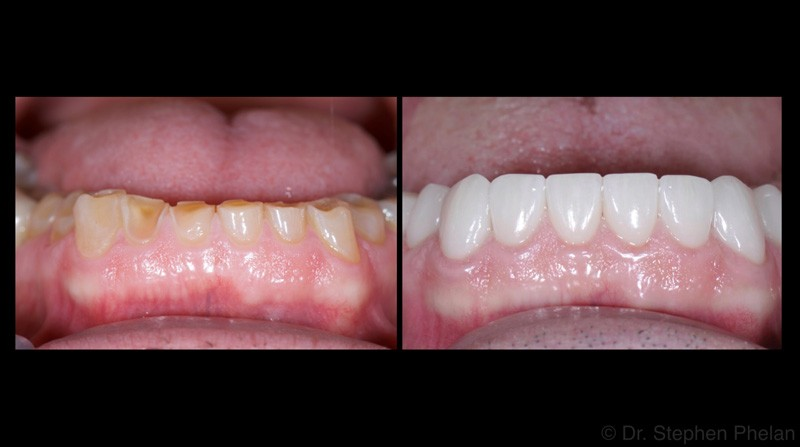
Source: Phelan Dental
5. Cracked Tooth
A crack is different from a craze line in that a cracked tooth is symptomatic and affects the deeper layer of your tooth. Symptoms would include pain on biting at a certain angle especially with hard or tough food. These symptoms usually worsen with time in terms of frequency and intensity. A cracked tooth requires a crown and occasionally a root canal if the pain is intense and lingering. If left untreated, the tooth can completely fracture and require an extraction.

6. Abfractions
An abfraction is caused by forces applied to the cervical area of the teeth through clenching, and most commonly, teeth grinding. Grinding forces can be as high as 80 kg and causes the tooth to flex along the gum line. Constant or extreme flexure can cause part of the tooth to pop out.
Unlike the V-shaped appearance of abfraction, the damage caused by abrasion is flat. Abrasions are usually caused by using a hard brush and overbrushing.
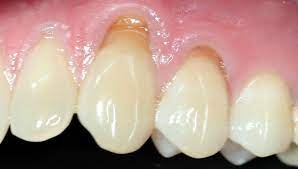
7. Linea Alba
This is a line at the side of your cheek. It is not cancerous but can hint to us of nocturnal bruxism, especially when coupled with other signs in your mouth such as wear facets.
Linea alba is usually caused by irritation to the buccal mucosa and can happen when the uneven surfaces of teeth grind against each other habitually, or from cheek biting when you clench your teeth.
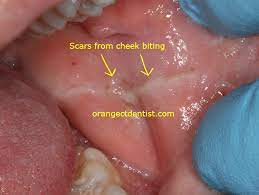
8. Ridges along the edge of your tongue (scalloped tongue)
Clenching or grinding your teeth frequently can lead to a scalloped tongue. This occurs due to pressing of the tongue against the teeth over time.
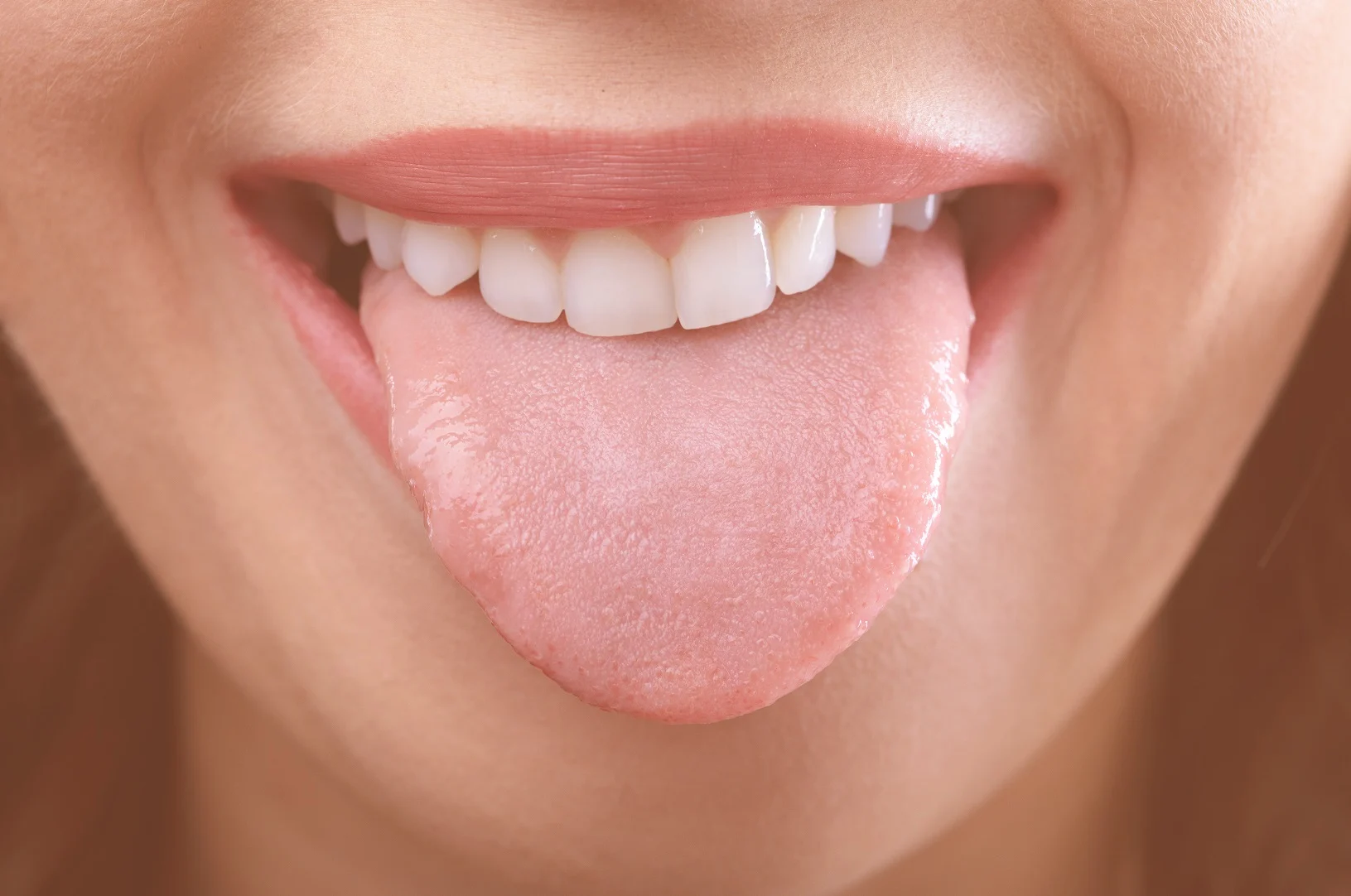
9. Torus
Torus is a bony outgrowth usually at the top of your palate or at the lingual areas of your lower jaw around your canine regions. They are associated with teeth grinding and clenching although there is no one singular cause recognised.

Source: Cleveland Clinic
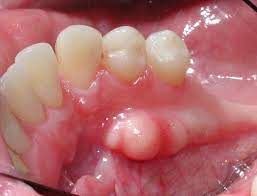
Source: Wikipedia
10. Achy jaw when you wake in the morning
If you have muscular pain at the sides of your cheeks or a painful joint when you open your mouth in the morning, chances are you are grinding or clenching your teeth heavily while you sleep at night. Other symptoms include very tender teeth which are painful on eating with no infection or decay noted.
These symptoms can be easily prevented and managed from worsening by seeing your dental professional for a custom mouthguard to wear when you sleep. The mouthguard acts as a buffer to reduce forces of the parafunction on your teeth and also help to protect against attrition.
Mouthguards should be customised as over the counter ones do not fit well. If a mouthguard rocks in your mouth, it in itself can cause teeth cracks and fracture.
Another option available to light sleepers or very heavy grinders would be botox.

